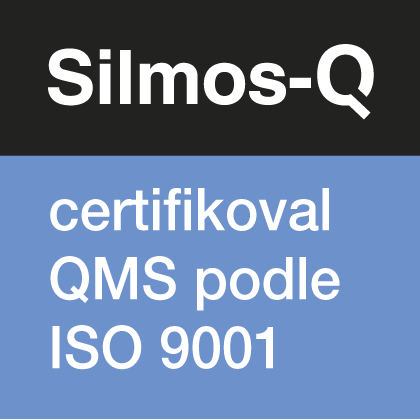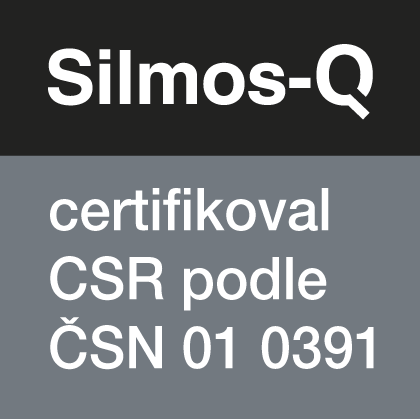Revitalisation of the Vaňkovka “brownfields”
Document on the construction of Vaňkovka:
https://www.youtube.com/watch?v=YXGzfrzBOXc
History of the site
On 21 March 1865 the city council and public prosecution office permitted Wannieck a Phil. Jellinek in Trnitá no. 19 and 21 the construction of engineering machine shops consisting of a foundry, cupola furnace, steam engine, boiler room and assembly workshops, with the exclusion of operation of boiler production. After Philip Jellinek left for Russia on 20 December 1868, F.W. became the sole owner of the entire factory. Under his management the production programmes and entire site was expanded for the whole of the next 20 years. In 1887 the number of workers increased to 250. The administrative and management building, warehouse, a new 36 m high factory chimney (i.e. thus the highest in Brno) was built between 1888 and 1889 in the street Zvonařka, and the construction began of a new boiler room.
In 1897 technical director Edmund Gams resigned from his position and asked to be discharged from the limited partnership due to illness. Chief engineer Kliment took over the technical management of the company. The sixty-two year old Friedrich Wannieck no longer wanted to manage the growing business and neither did his son, Friedrich Oskar. On 18 April 1901 the merger began of Vaňkovka with První brněnská strojírna (PBS), which was completed on 11 January 1902. However the loss of independence was compensated by a highly prospective production programme. PBS directors Ludwig Augustin Lohnstein and Augustin Hnevkovsky decided to expand the Vaňkovka buildings and technical facilities and began the production here of steam turbines having just been granted a licence by the English company Parsons. Throughout the period of 1903 to 1929 a total of 722 turbines with a total output of 1135 MW were produced in Vaňkovka, more than half of them were exported to a number of countries in eastern Europe and the Balkans. In 1929-1930 the production facilities, employees and on-going production were transferred from Vaňkovka to the PBS site in Olomoucká Street, in 1930 the Vaňkovka site was closed and in 1936 sold to České zbrojovka Brno, in 1930-1936 Vaňkovka was closed and guarded only by a PBS night watchman, in 1936-1939 it operated as Zbrojovka a.s. Brno –Vaňkovka plant. In 1939-1941 Vaňkovka became part of the Herman Göring plants (Wannieckwerk), in 1942-1944 Wannieckwerk – Waffen Union SkodaBrűnn.
After the war, Vaňkovka was used as a separate plant by the following:
Spojené továrny na obráběcí stroje n.p., Zbrojovka Brno n.p., Závody Jana Švermy n.p.(change of name to Zbrojovka Brno), Zetor Brno n.p. and as of 1989 the state enterprise Zetor.
In the period of 1996-2000 Vaňkovka was owned by the National Property Fund.
The first attempts at preserving buildings of historical value in Brno appeared in an assessment of research into industrial sites carried out in 1985. Two years later the city assigned to the Faculty of Architecture of Brno University of Technology the intent of the buildings and first urban-architectural study of the reconstruction and new way of utilising Vaňkova. The building ban which was declared on 29 October 1990 prevents the site – Zetor state enterprise – any possible demolition, but at the same time rules out any major necessary maintenance.
On 13 May 1992 Vaňkovka was registered in the Central List of Cultural Monuments of the Czech Republic.
The Vaňkovka Foundation (established in May 1994) and as of 1998 the successor Občanské sdružení Vaňkovka (Vaňkovka Civic Association) (OSV) attempted the visibility and new utilisation of Vaňkovka. More than 250 cultural events have been held on the site up to the end of 1999. The settlement of property relationships was a condition of the new utilisation of Vaňkovka, despite this the deteriorating Vaňkovka remained in the management of the National Property Fund for several long years (from 1996 right up to 2000).
After 2000 the Vaňkovka Association prepared several events with the participation of experts and the public focusing on the wider context of this building – a round table on the regeneration of city centres with foreign experts for city officials and representatives of the company ECE and an international workshop.
In 2000 the city of Brno finally acquired ownership of the Vaňkovka site and incorporated it into JIŽNÍ CENRTUM BRNO, a.s. In the same period ECE presented its plan at the city hall to invest 4 billion CZK into the construction of a shopping and social centre with a capacity of 37,000 m2 of retail space. In autumn 2003 the project obtained a building permit and in November demolition work began of part of the site – pattern shop, foundry and part of the core room. In March 2004 the foundation stone was officially laid of the new Vaňkovka Gallery.
In the summer of 2004 a contract was signed between ECE and the Vaňkovka Civic Association on the lease of the premises in the Vaňkovka Gallery on the ground floor of the former changing rooms of the foundry for the centre of non-governmental organisations (NGOs) for 10 years at a symbolic price.
The Vaňkovka Shopping Gallery was officially opened on 23 March 2005.
The official opening ceremony of the Wannieck Gallery in March 2006 was also attended by the great grandson of Friedrich Wannieck, Wolfgang Wannieck, who brought the family portrait of his ancestor from Munich and donated it to the new gallery.
On this occasion JIŽNÍ CENTRUM BRNO, a.s. unveiled the commemorative plaque to Friedrich Wannieck and Gustav Lindenthall (the world famous builder of steel bridges in the USA who learned his building trade in the late 1860s during the construction of Vaňkovka) on the northern facade of the reconstructed machine shop.
The revitalisation of the Vaňkovka site became the first good example for many people of the new utilisation of so-called “brownfields” in Brno and also a significant impulse for the development of the South Centre.
Vaňkovka transformation timeline:
http://www.galerie-vankovka.cz/cz/historie_vankovky






